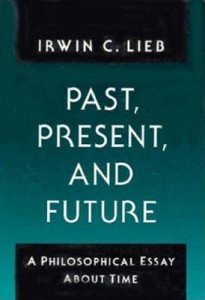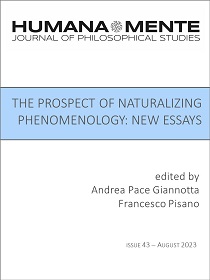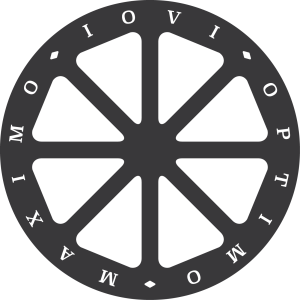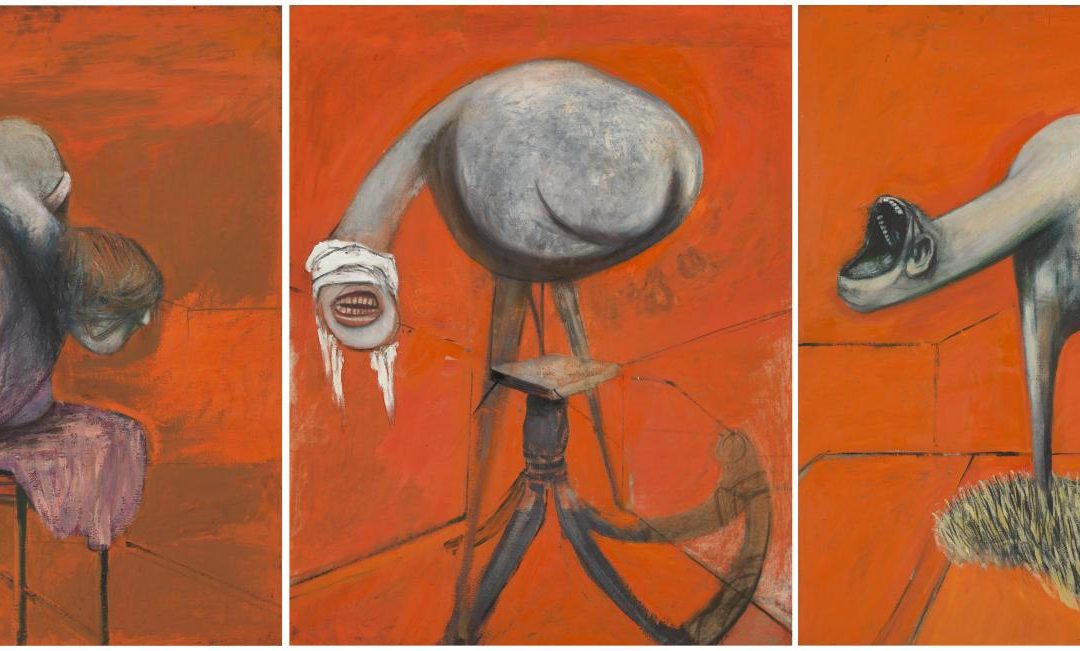Past, Present, and Future
A philosophical essay about Time
di Irwin Chester Lieb
University of Illinois Press
Urbana and Chicago 1991
Pagine 260
We are temporal, through and through (p. 40)
 Comprendere il tempo implica la conoscenza della mole di informazioni, di dati, di certezze e di interrogativi che le scienze della natura offrono, coniugandole tra loro mediante un linguaggio e una metodologia che del tempo intendono capire l’essere, la verità, l’identità/differenza.
Comprendere il tempo implica la conoscenza della mole di informazioni, di dati, di certezze e di interrogativi che le scienze della natura offrono, coniugandole tra loro mediante un linguaggio e una metodologia che del tempo intendono capire l’essere, la verità, l’identità/differenza.
Il Saggio filosofico sul tempo di Irwin C. Lieb è un esempio assai chiaro di questa metodologia. Il suo titolo è tanto semplice quanto impegnativo: Past, Present, and Future. La tesi fondamentale di Lieb è che passato, presente e futuro esistano. Che esistano davvero, che possiedano una densità ontologica e non soltanto una modalità psichica o epistemologica. Il tempo sarebbe quindi una realtà piena, totale e pervasiva. Il tempo infatti «not derived from anything else and its reality is most evident in the continuous passing in everything that moves, changes, lasts, or even remains the same» (p. 4); c’è «something continuous, steady, and indipendent of other motions, and this can be called time self», questo qualcosa è insieme «in the things themselves and in their relations to one another» (6).
Ciò che per lo più impedisce di intendere tale realtà piena, sostanziale e relazionale del tempo è il riduzionismo ontologico che ritiene esserci una e una sola forma di esistenza reale, identificata con la massa/volume/peso. Contro tale monoteismo metodologico dobbiamo capire che «the distinction we need is not between what is and not real but between kinds of reality. Everything is real, but things are real in different ways» (3). La natura scaturisce infatti da una continua produzione d’essere, da una costante e indefinita generazione del nuovo. Tale potenza creativa produce i due elementi fondamentali dei quali l’esseremondo è composto: Time e Individuals. Entrambe le parole non si riferiscono a degli enti ma a dei processi, i quali rendono possibile l’esistenza degli enti e ne garantiscono la comprensibilità.
Individuals è il termine chiave di questa ontologia poiché con esso Lieb intende qualcosa che esiste nel passato, nel presente e nel futuro. Qualcosa dunque che non c’è soltanto spazialmente ma che possiede perduranza (per usare la definizione/distinzione di D.K.Lewis): «Individuals are conceived to extend from the present into the future and the past, and each state of them is different from the others. […] Individuals are always changing, through and through. Their fundamental change is to reconstitute themselves. […] Not being confined wholly to a moment, individuals are spread through time. Time and individuals are inseparable» (11). Come si vede, individuals non sono degli enti ma della attività, delle strutture ontologiche che esistono perché accadono. Incessantemente accadono. Questo costante accadere è la struttura ontologica di base. È il fondamento. Il mutamento consiste nel diventare passato di qualcosa che continua a esistere anche nel presente, proprio perché «the being of an individual is not wholly present» (191).
Il presente è quindi il tempo degli enti singoli, degli enti astrattamente intesi perché privi di relazione. Senza questa modalità del tempo non potrebbero naturalmente esserci le altre -«the present is nodal for the other parts of time» (12)- ma non bisogna da ciò concludere che le altre siano soltanto un ricordo, un’attesa. È esattamente tale errore categoriale e ontologico a produrre molti equivoci sulla temporalità, a partire da quelli -fondamentali- della estensione del tempo e dunque sostanzialmente della sua spazializzazione. Il presente non è un punto nel tempo poiché il presente da solo è un’astrazione. Ma anche il passato da solo è un’astrazione, così come il futuro. Il tempo è unitario, sono le azioni nel tempo a poter essere presenti, passate e future. Se l’accadere è possibile è perché il presente, il passato e il futuro sono tutte strutture e modalità reali della natura. In modi diversi, certo, ma tutti reali. Ciò che rende possibile l’identità del tempo e la differenza dei suoi modi è l’intreccio indissolubile di essere e divenire.
There are two fundamental realities and they are together. […] There are beings and becoming; realities that are together are also distinct. There should therefore be a twining of the traditions: because individuals and time are each real and are inseparably together, being and becoming are equally fundamental and, by being so, they ensure that the change of the world. (81)
Dato che le azioni e gli eventi non esistono soltanto come presente e nel presente, la struttura del mondo è assai più complessa, più creativa e insieme più ordinata rispetto a come il monoteismo temporale la immagina. Gli individuals sono eventi singoli e separati nel presente, là dove sono anche parziali. Essi diventano completi nel passato mentre le parti del loro essere non ancora compiute costituiscono il futuro.
Ciò che chiamiamo spazio è questo presente che estrapola dall’intero dell’essere una sua parte e la rende visibile qui e ora. Passato e futuro sono dunque modalità diverse rispetto al presente anche perché è soltanto nel presente che gli enti/eventi (individuals) sono discreti, diventano singoli. Nel passato e nel futuro gli stessi enti/eventi sono coniugati con il tutto -«in the past and future parts of them individuals are merged together»- e costituiscono l’intero. (31) Gli individuals diventano passato mentre stanno diventando presente e anche questo rende il passato del tutto reale. Non soltanto, quindi, perché ciò che accade ora è conseguenza e séguito di ciò che è accaduto prima ma anche e soprattutto per altre due ragioni. La prima è che «what is in the past is like a possibility that that has been affected by being actualized» (115), a conferma della struttura dinamica dell’essere; la seconda è che «the past has mighty effects in the present, not by acting on it -the past has no agency- but in the way in which we shape and form ourselves on it» (255), a conferma della struttura mentale dell’essere.
Il futuro è per Lieb altrettanto reale per due ragioni. La prima riguarda l’apertura degli enti/eventi alle loro stesse possibilità; se il futuro non fosse reale, infatti, non potremmo comprendere che cosa gli enti sono, come possono agire, quali sono le loro possibilità. La seconda ragione concerne la comprensibilità del cambiamento: è evidente che senza la realtà del futuro non potremmo descrivere nessun movimento e mutamento.
L’esistenza in sé di passato, presente e futuro è mostrata per Lieb anche da ragioni assiologiche oltre che da quelle ontologiche ed epistemologiche. Gli eventi possiedono nel futuro un valore estetico, essendo costituiti anche dall’immaginazione come possibilità; nel presente un valore etico, dato che comportarsi significa sempre valutare alternative e scegliere quelle che vengono ritenute buone, le migliori; nel futuro un valore storico, frutto della sedimentazione dell’accaduto nei parametri del tempo in cui è accaduto e in quelli del tempo in cui viene valutato, in modo da trovare e dare loro un significato razionale.
Da ogni punto di vista, dunque, e in ogni struttura del reale l’essere è tempo, «whatever is cannot but be in time» (183) e «our final reality is not something apart from time but is instead the whole of the past, the present, and the future and all the value there is and can be in them» (251).
Partito da una serie numerosa e serrata di interrogativi essenziali -ad esempio: «Why, how, when, and in what ways do they change, and is their having to change connected with each moment’s having to be new?» (9-10)-, l’analisi di Lieb si pone in modo franco e coraggioso contro le risposte di moltissimi filosofi. Non soltanto di coloro che hanno negato esplicitamente il tempo; non soltanto contro la lunga tradizione parmenidea che intesse il pensiero occidentale; non soltanto contro le prospettive riduzionistiche -antiche o contemporanee che siano- volte a confinare la temporalità dell’essere alla misurabilità dei tempi della fisica; ma anche contro numerosi fra coloro che vengono di solito ritenuti sostenitori della realtà del tempo, i quali pensano il tempo come flusso in cui soltanto il presente è davvero reale e il resto è realtà degradata, derivata, seconda.
A tali prospettive Past, Present, and Future oppone una peculiare forma di platonismo e di spinozismo dinamico, per il quale «the passage of time and the activity of individuals are strands of process inside the unchanging totality of the real» (12). Il mondo delle forme e dei paradigmi non sta, come Platone ritiene, al di là del tempo e separato dal tempo. È piuttosto l’accadere senza posa e ordinato del mondo a produrre le forme, i paradigmi e il loro intreccio. Infatti, «the most general idea in this essay is that what is real is an unchanging totality; there can be no additions to it, and nothing can be taken from it. This does not mean, however, that things do not change and that there are no novelties. It means that all processes and the passage of time itself take place inside the otherwise unchanging totality» (257).
In tale profonda e feconda compresenza di essere e divenire traluce la struttura metafisica e gnoseologica che sola permette di comprendere ciò che è perché di ciò che è costituisce la forma naturale e il riflesso mentale: la dinamica di identità e differenza. Se la capacità che il corpomente umano e animale ha di riconoscere regolarità e identità nel mondo «depends on our ability to remember what has occurred and to recognize important kinds of similarities» (216), è perché «the natures of individuals also change; they are modified but remain the same. These natures are the general ways in which individuals change and act» (193). Essere, verità, identità/differenza, tempo vengono così coniugati nel profondo delle loro relazioni costituenti la natura. È anche questo che fa della metafisica la più radicale e profonda conoscenza che del tempo sia possibile nel tempo maturare.

 Il numero 43 di Humana.Mente ha come tema The Prospect of Naturalizing Phenomenology: New Essays ed è composto da una limpida introduzione dei due curatori e da dodici saggi divisi in tre sezioni.
Il numero 43 di Humana.Mente ha come tema The Prospect of Naturalizing Phenomenology: New Essays ed è composto da una limpida introduzione dei due curatori e da dodici saggi divisi in tre sezioni.



